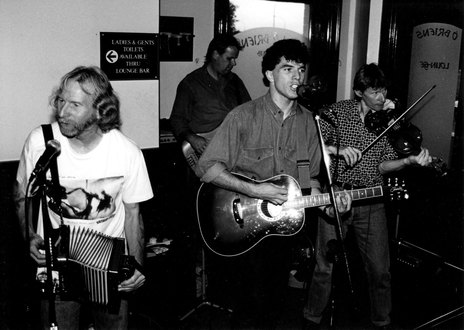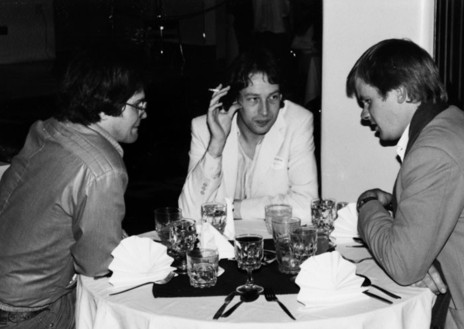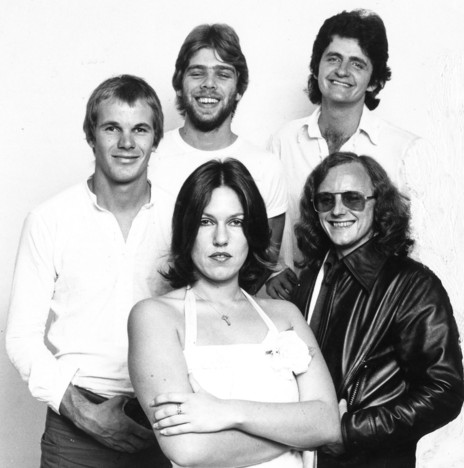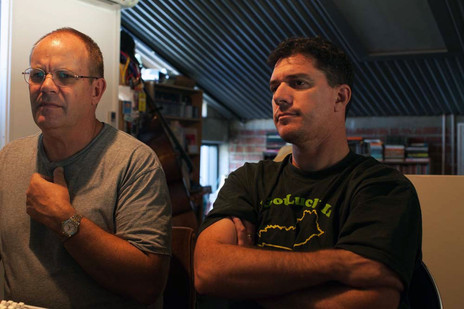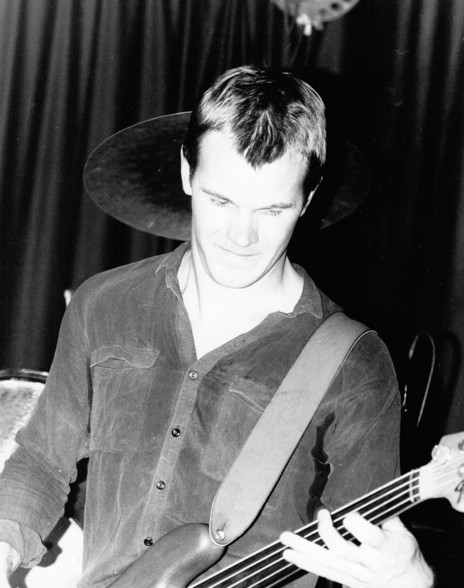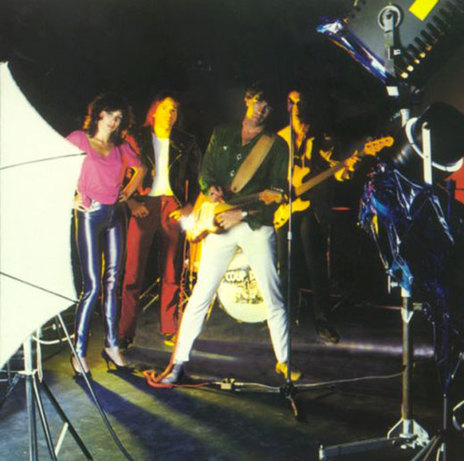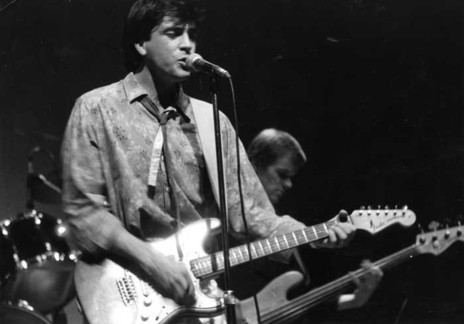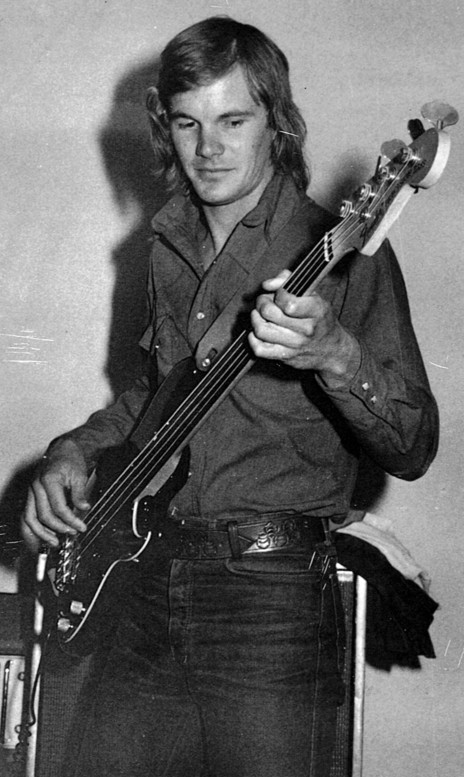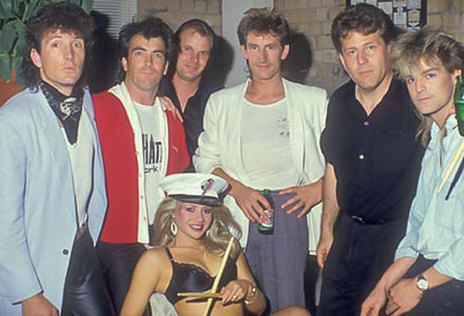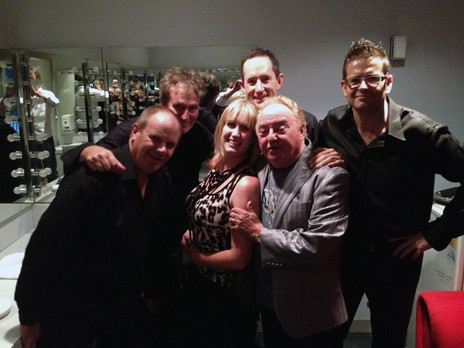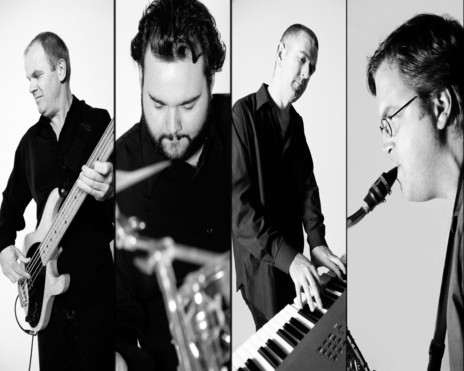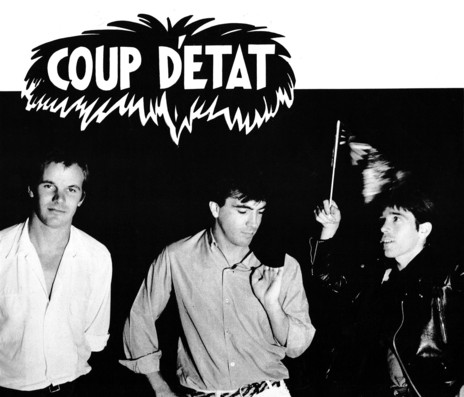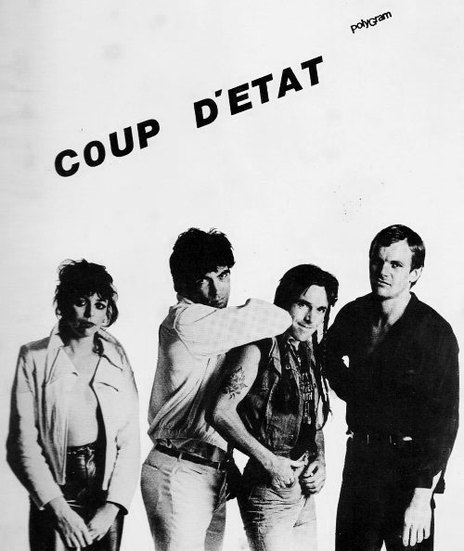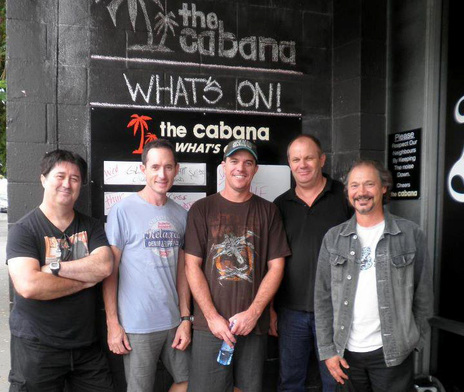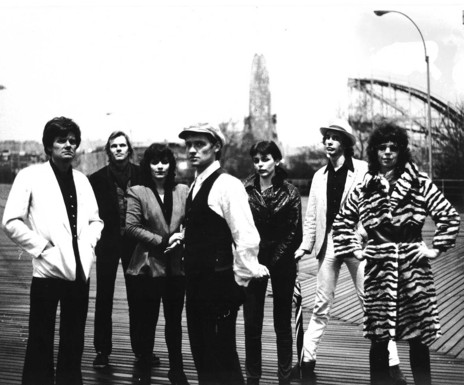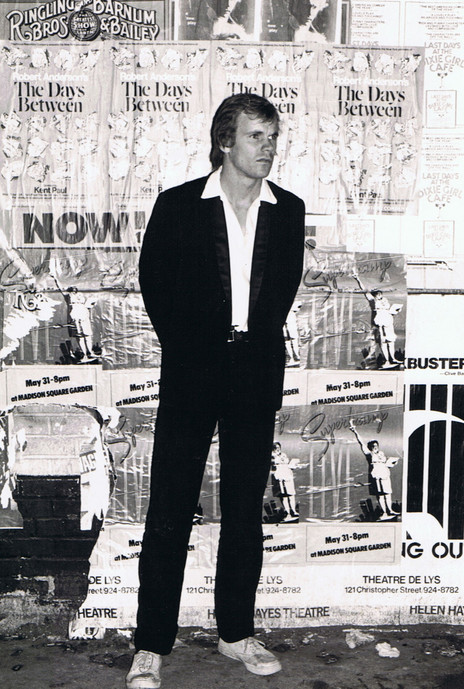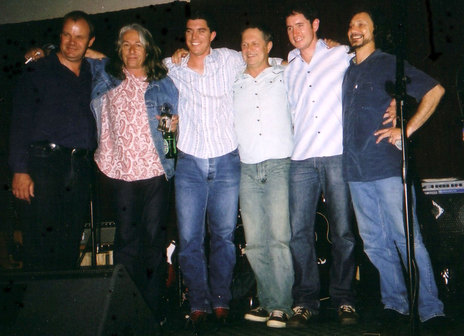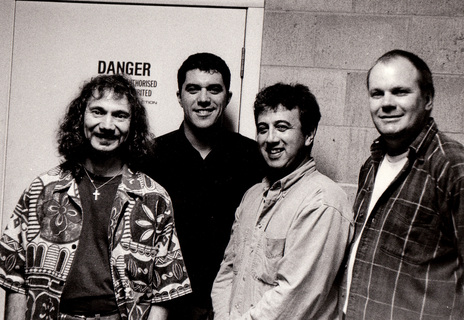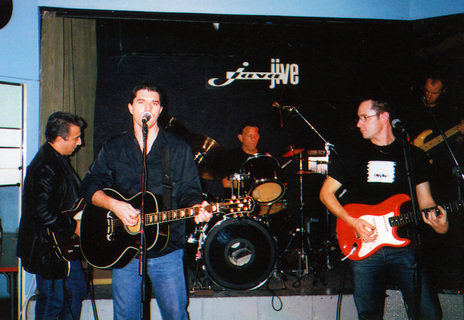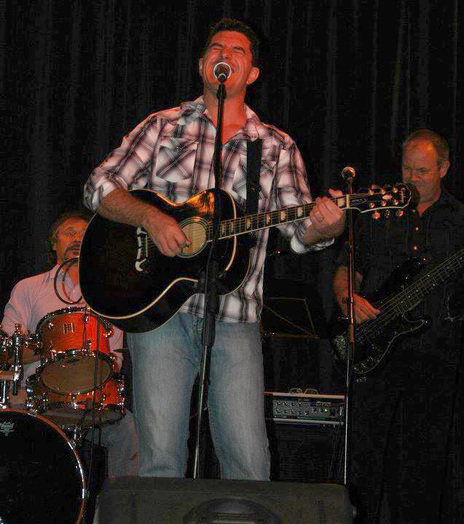Hannan played in a number of high school bands, sometimes with brother John, 18 months his senior, playing the local dances and church halls. In 1967, aged 15, he was headhunted by a group of older musicians and joined Jason Tory, R&B enthusiasts who regularly played The Place in central Wellington. During this period Hannan shifted from rhythm guitar to bass, receiving lessons from NZSO double bassist Barry Johnstone.
With brother John, Neil and the other band members formed a blues club at the Montmartre, alongside The Place. The ever-changing band hosting the Sunday afternoon events was named the Capel Hopkins Blues Dredge and featured Midge Marsden and Bill Lake.
Hannan left school in 1969, by which time the Blues Dredge had disbanded (after recording two songs, ‘Kidman Blues’ and ‘Work Song’ for the New Zealand blues compilation In the Blue Vein).
In 1970 he was in a three-piece band, Olibet, with guitarist John O’Connor and drummer Tom Swainson, regulars at The Oracle. Hannan and O’Connor were to play in several bands together over the next four years. Mephisto formed in 1971 and included singer Krissy Klocek, pianist John Hannan and drummer Rob Clarkson. In early 1972 they set sail aboard a Shaw Savill ship, playing 10 hours a day in exchange for fares. The band soon disintegrated in London, where Hannan remained for five months. Hannan and O’Connor limped back to New Zealand after bellying up in Perth. “We were so broke, we could only afford one bus fare to Melbourne [in order to take the guitars]. We tossed a coin – I won and caught the bus, John had to hitchhike.”
The Melbourne stay was short too, an attempt to form a band with saxophonist Dave Brown (ex-Highway) came to nothing. Wellington was kinder.
“I’d done a few things earlier with Downstage [Theatre].” Hannan recalls, “but from 1973 I started picking up regular theatre work. Clive Cockburn’s Valdramar was one production.” Neil Hannan’s association with musical theatre continues to this day.
Midge Marsden’s Country Flyers brought Neil Hannan to a wider audience.
Midge Marsden’s Country Flyers brought Neil Hannan to a wider audience. He joined in 1974 while the band was resident at the Royal Tiger Tavern. The following year they hit the road, touring the breweries circuit almost constantly, from Auckland to Dunedin. Guitarists to pass through the line-up included Kevin Watson, Martin Hope, Richard Kennedy and, briefly, Mike Farrell.
“Playing with Midge was an education,” Hannan says, “he had such good taste and was constantly playing new stuff.”
In 1977 the Country Flyers began a relationship with the Red Mole Theatre Troupe, which included a six-month residency at Carmen’s Balcony. In September 1977, the troupe, including Beaver and the Country Flyers, shifted to Auckland for a season at Phil Warren’s Ace Of Clubs. When Red Mole returned to Wellington at the beginning of 1978, the Flyers, now including Beaver, remained in Auckland.
As it turned out, Midge Marsden was soon to shift across the Tasman to join the Phil Manning Band. Hannan and Beaver, plus guitarist Paul Clayton, pianist Murray McNabb and drummer Bud Hooper continued as The Flyers, but only for a few months.
Meanwhile, Red Mole was trying their hand in the USA and in 1979 Hannan joined them in New York. It was a struggle but the troupe managed to survive and also spent four months in Britain. Hannan teamed up with keyboardist Jan Preston to compose music for Red Mole performances. He also played in a makeshift band of Kiwi expats named The Shaky Islanders who played Max’s Kansas City, CBGB’s and other notable New York venues.
Despite the hardships the time spent overseas with Red Mole was not without its highs. “In Britain there was a circuit similar to New Zealand’s Music In The Parks, community-based events,” Hannan recalls, “and Red Mole also performed at several British universities. Back in the States there was a two-month tour, lots of universities. We performed at the New Zealand Embassy in Washington, played in Baltimore, Philadelphia, Austin, Houston, New Mexico, and we ended up in LA at a place called The Odyssey Theatre out in Santa Monica.
“I enjoyed the USA and I liked Americans. They were quite supportive, they liked people having a go, and they were very honest – they would tell you if they didn’t like what you were doing.”
Red Mole returned to New Zealand in January 1980, performing at the first Sweetwaters festival and following through with a universities orientation tour. They split up at tour’s end; Hannan and Jan Preston formed Wolfgang with Harry Lyon of the recently-disbanded Hello Sailor, plus drummer Steve Osborne (soon replaced by Paul Dunningham). They played just a handful of gigs as Wolfgang before renaming themselves Coup D’Etat. At year’s end the band scored their sole hit single, Lyon’s ‘Doctor I Like Your Medicine’, which collected Best Single at the 1981 RIANZ Awards.
“Coup D’Etat took off really quickly, probably too quickly.”
– Neil Hannan.
“Coup D’Etat took off really quickly, probably too quickly,” says Hannan. “We were very busy for awhile but in 1981 it came to crashing halt.” Line-up changes saw Hannan and Lyon joined by pianist Stuart Pearce and drummer Steve Garden, but that line-up didn’t last long. By 1982 Coup D’Etat was no more.
In 1982 Hannan teamed with Mike Farrell in the Farrelli Brothers. Hannan would play with Farrell, on and off, until the guitarist’s death in 1999. In 1986 Hannan was recruited in the reformed Hello Sailor and featured in the band’s performances over the next two years.
Hannan started the Scoop De Loop studio in Mt Eden in 1987; the SDL Music label followed. “We started it primarily to record out own stuff and we scored some jingle work and other assignments.”
In the years since, Scoop De Loop has been responsible for several key NZ albums, including releases by Al Hunter, Glen Moffatt, Midge Marsden and the Auckland Jazz Orchestra, and a few oddities like Graham Brazier’s Raw, a Hannan produced dual Radio NZ programme released by SDL Music.
Of his move to the recording process, Hannan says, “In the Sixties and Seventies, before big PA systems were available, I was usually the band member who did the mixing and patching up the PA. The shift into record production extended from that.”
In the new age of digital music streaming SDL Music has made all its catalogue available and it has proved to be quite successful – with several artists making more than they ever did from the more conventional sources.
If, for the most part, Scoop De Loop and SDL Music exist as labours of love, Neil Hannan has always remained high in demand as a musician, spending time with Brazier’s Legionnaires and bands led by Hammond Gamble, Al Hunter, Glen Moffatt, and John Rowles. There have also been tours with Randy Crawford, Renee Geyer, Chris Cain and Greg Bissonette, as well as playing in theatre productions like Cats, Evita, 42nd Street, Anything Goes and High Society.
Three times he has toured with Gerry & The Pacemakers: Gerry Marsden was so taken with the NZ Pacemakers (Hannan, drummer John Scott, guitarist Chet O’Connell and keyboardist Karl Benton) that he contracted the line-up to accompany him throughout Australia.
Hannan played the epic Christmas In The Park for 12 years running, was a longtime member of Rodger Fox’s corporate band and Big Band, and has twice toured the US with Fox’s bands. Since 2003 Hannan has been a member of Shane Cortese’s Class Of ’58, a rock and roll revival revue.
Hannan has occasionally formed his own bands; in 1994 he released a solo album, 24 Hour Oasis and, in 2009, the Neil Hannan Band’s What Were They Thinking. More solo work is available on the streaming platforms but, as Hannan says, “I don’t have the personality to be a front man, you need a Marsden or a Brazier behind the microphone. I’m happy being a sideman, happy to just express myself through the music.”
